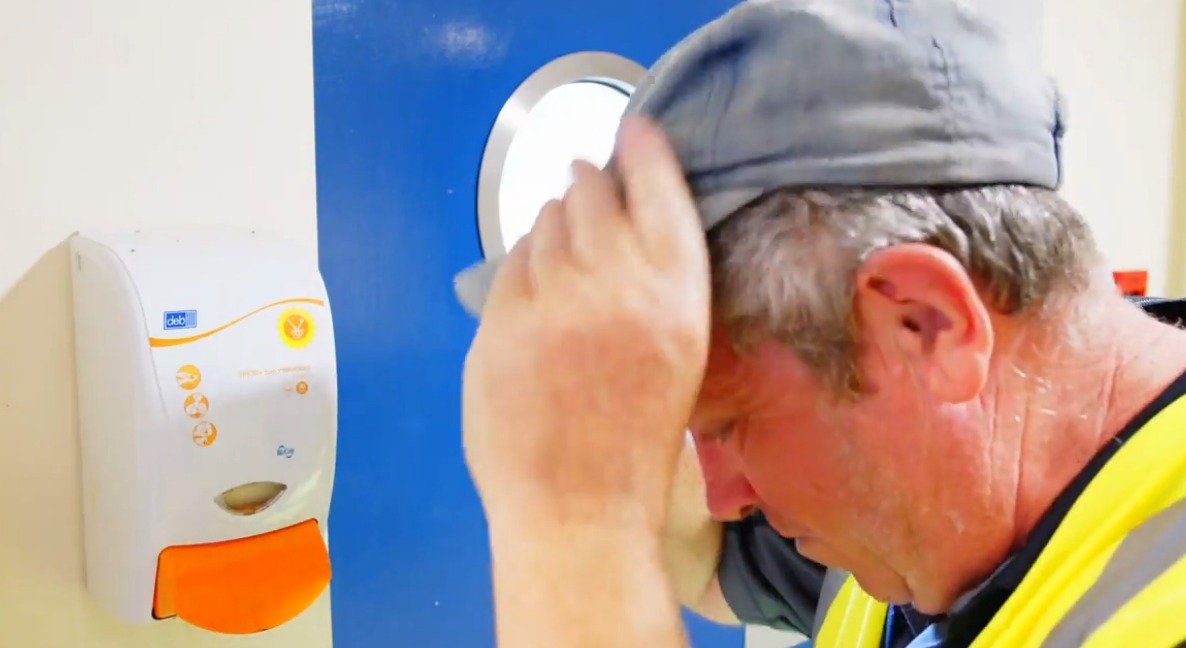Working safely in hot temperatures
A warm, sunny day makes most of us feel good, but too much sunlight can be harmful on the skin and sun and heat can cause dehydration, heat stress and even death.
Skin damage, skin cancer and your eyes
Too much sunlight is harmful to your skin. It can cause skin damage including sunburn, blistering and skin ageing and in the long term can lead to an increased risk of skin cancer. Skin cancer is one of the most common forms of cancer in the UK with over 50,000 new cases every year.
Ground staff that work mainly outdoors for long periods could get more sun on their skin than is healthy for them, increasing the risk of skin cancer. If work keeps you outdoors for a long time your skin could be exposed to more sun than is healthy for you. You should take particular care if you have:
- fair or freckled skin that does not tan or goes red or burns before it tans
- red or fair hair and light-coloured eyes
- a large number of moles.
A tan is a sign that the skin has been damaged. The damage is caused by ultraviolet (UV) rays in sunlight. UV can also damage your eyes.
Heat Exhaustion and Heatstroke
Working, particularly physical work, in hot and/or sunny conditions can cause heat exhaustion which can lead to heat stroke which needs to be treated as an emergency.
The signs of heat exhaustion include a headache, dizziness and confusion, loss of appetite and feeling sick, excessive sweating and pale clammy skin, cramps in arms legs and stomach, fast breathing or pulse, a high temperature of 38°C or above and being very thirsty.
The signs of heat stroke are more serious. Know the signs of heat exhaustion and heatstroke, and what to do to help someone with heat exhaustion, see: https://www.nhs.uk/conditions/heat-exhaustion-heatstroke/
What can you do to protect yourself and stay safe in the sun and heat?
- Reschedule work to cooler parts of the day where possible.
- Reduce the amount of time you spend in the sun, stay in the shade.
- Introduce shade to working areas where possible and it is safe to do so.
- Work in stages with more breaks and rehydrate and cool in those breaks.
- Rotate tasks across the team.
- Whenever possible during breaks and especially at lunch time, stay out of the sun and remove PPE to allow cooling (replace before returning to work).
- Drink plenty of water. Avoid dehydration by drinking a minimum of 2 litres of water throughout the day. Water is vital to your body’s performance and overall health. Your risk of accident, including when operating machinery, can increase significantly if you are dehydrated.
- Wear loose clothing that allows for air circulation.
- Dampen down clothing to provide extra cooling, especially in breezy conditions.
- Keep your top on. Cover up, especially while you are working around midday, this will stop most of the UV. Do not be tempted to leave it off, even if your skin tans easily and does not burn.
- Long sleeves and a collar can add to sun protection and some fabrics offer more UV protection than others.
- Wear a hat with a brim or a flap that covers the ears and the back of the neck.
- Use a high factor sunscreen. Hats and other clothing are the best forms of protection, but sunscreen creams and lotions can add useful protection for parts of your body that are not easy to shade from the sun. The NHS recommends a sun protection factor (SPF) rating of 30 or more and at least 4-star UVA protection. Read the supplier’s instructions on how it should be applied and how frequently it should be reapplied. Do not forget the backs of your hands.
- Where it is safe to do so, wear tinted sunglasses with UV protection. If you are required to wear safety glasses you should wear tinted, UV protecting safety sunglasses rated to match the specification of your normal safety glasses, and only where the tint does not impact on the safety of the task. See more on. HSE - Skin at work: Outdoor workers and sun exposure
Acting quickly on skin cancer
- Check your skin. The first warning sign is often a small scabby spot which does not clear after a few weeks. Look for changed or newly formed moles or any skin discolouration. It is normal for a few new moles to appear until you are about 18 years old. As an adult you should pay particular attention to any growths which appear on the face, especially around the nose and eyes, or in the backs of hands; you should show your doctor any moles which change in size, colour, shape or start to bleed.
If you notice any of these signs seek medical advice, most of these signs will be harmless, but medical checks may be needed to be sure.
See: https://www.nhs.uk/conditions/melanoma-skin-cancer/ for more information


 Tweet
Tweet